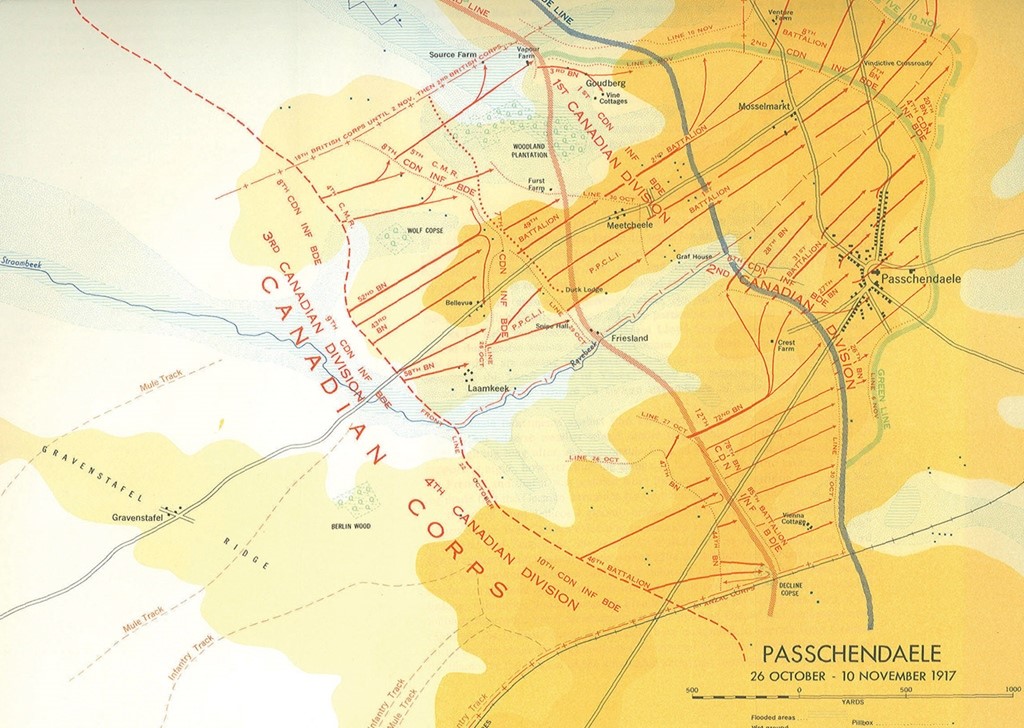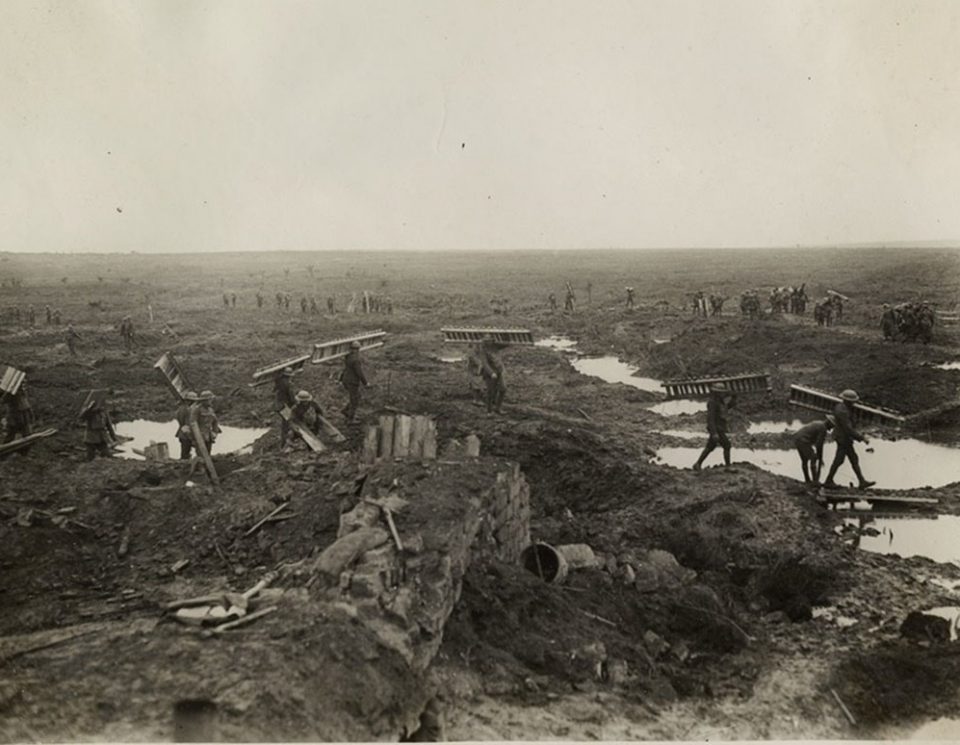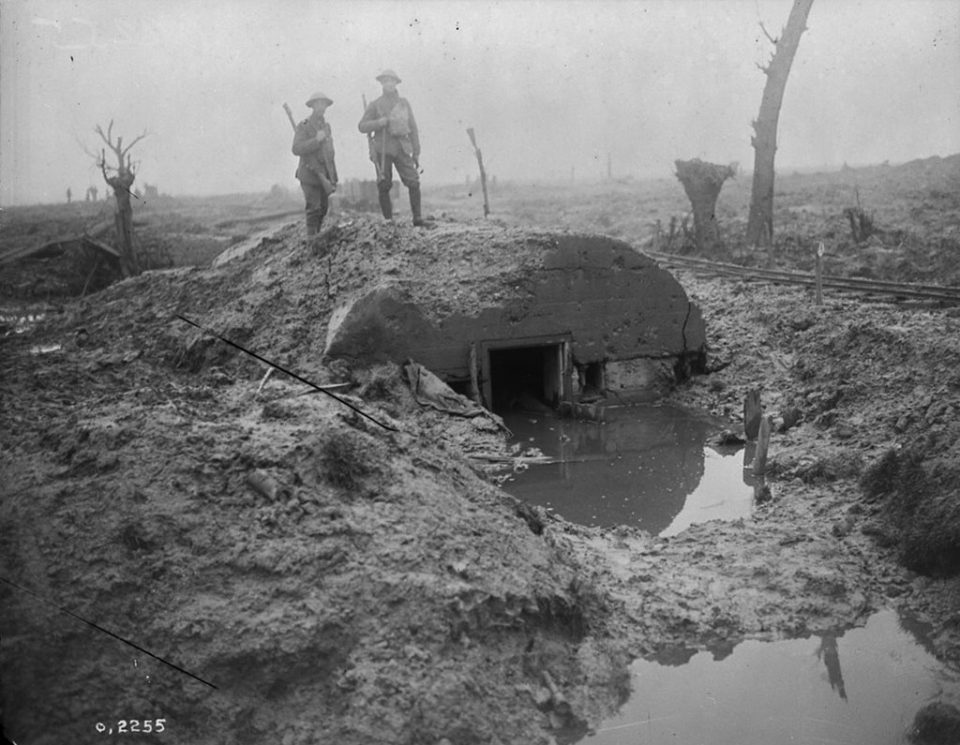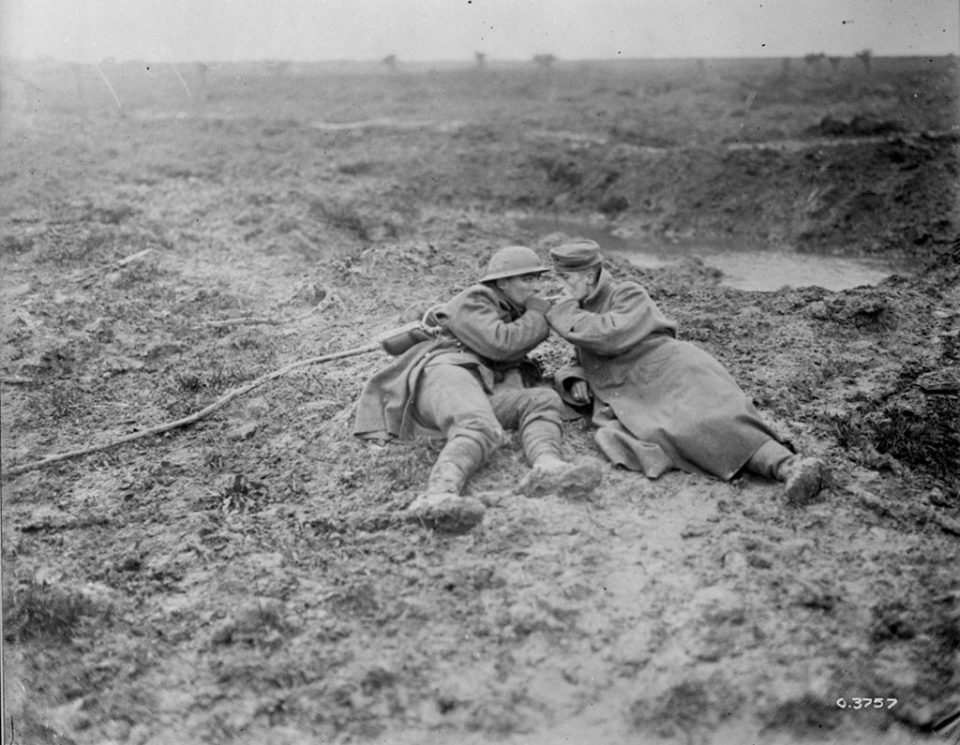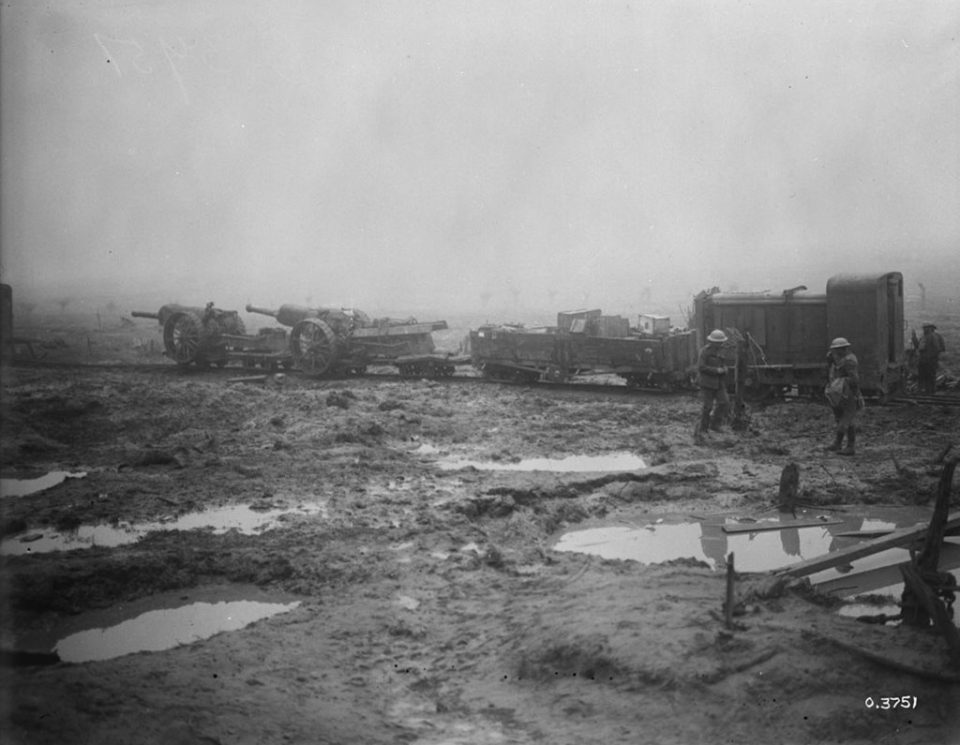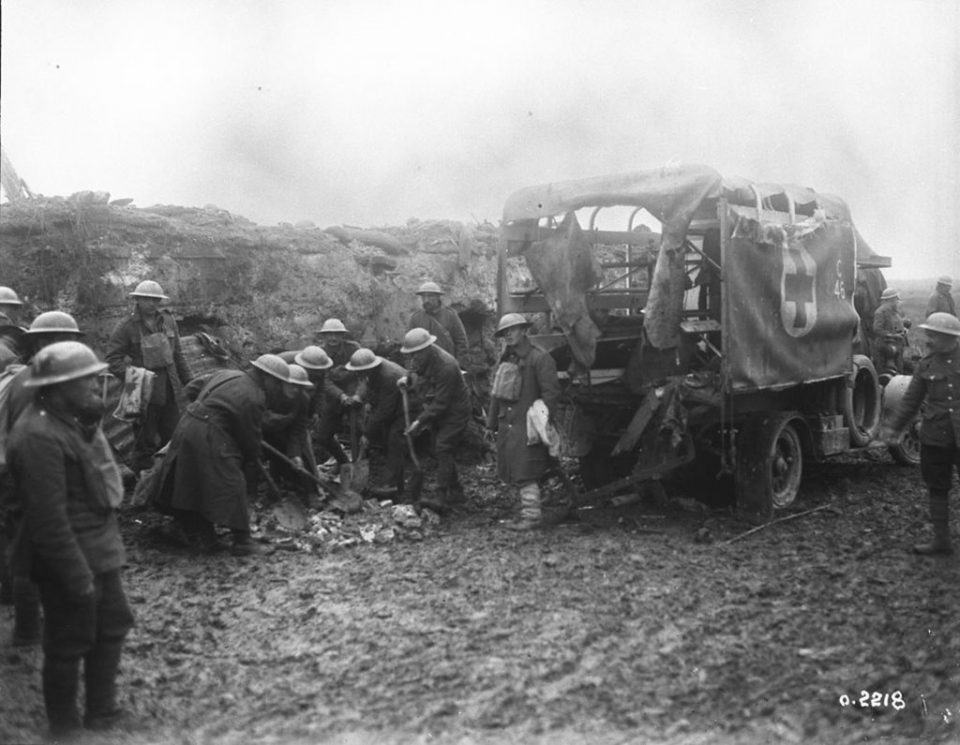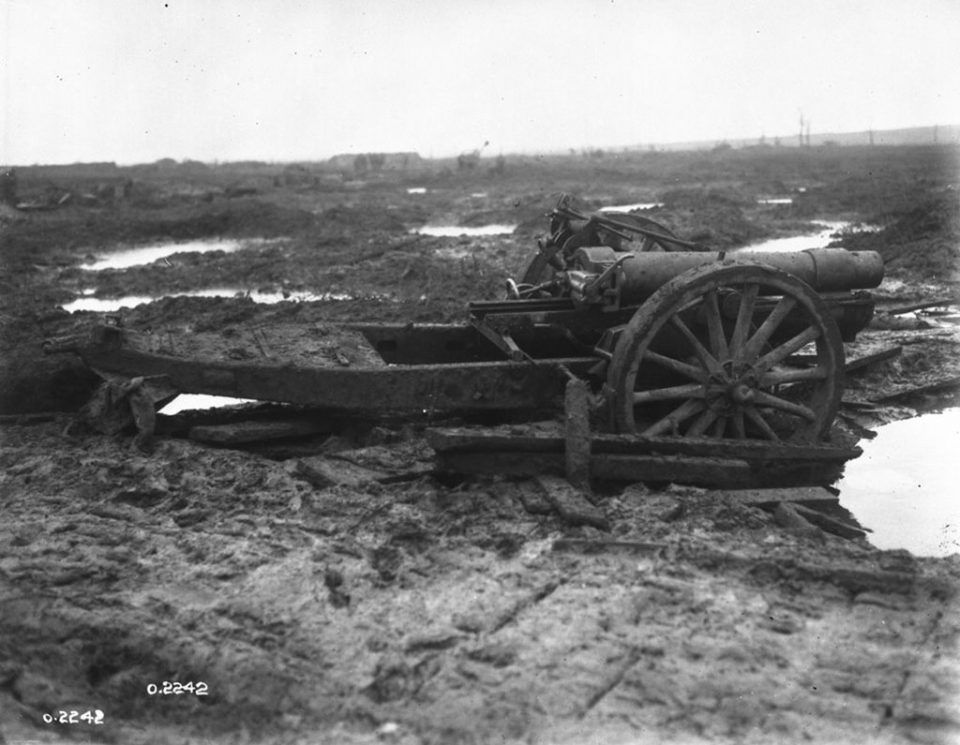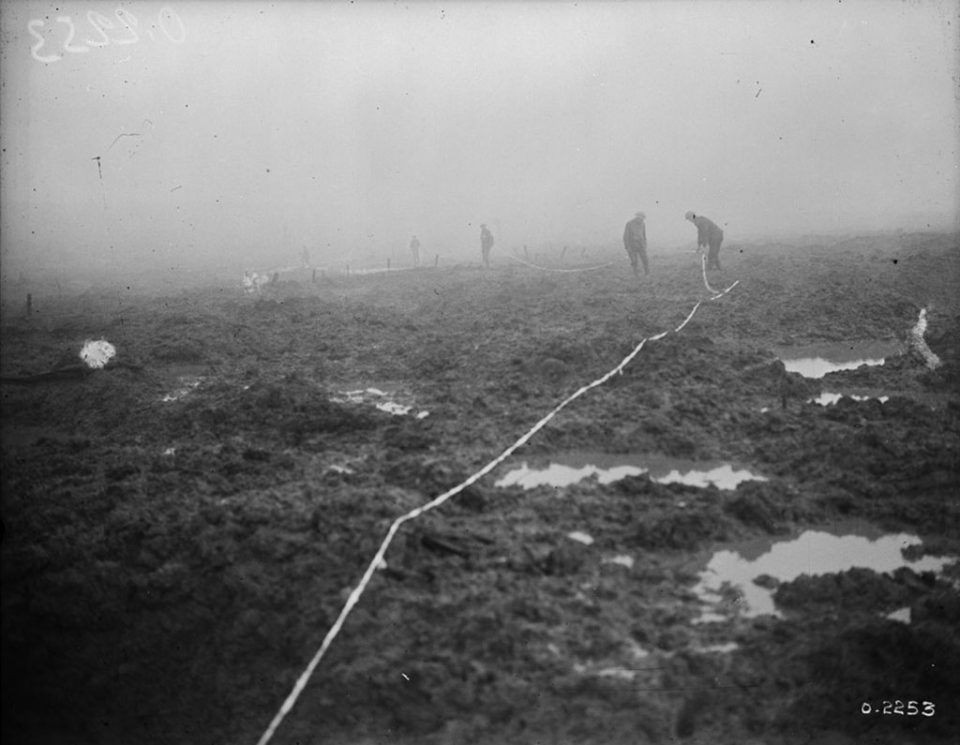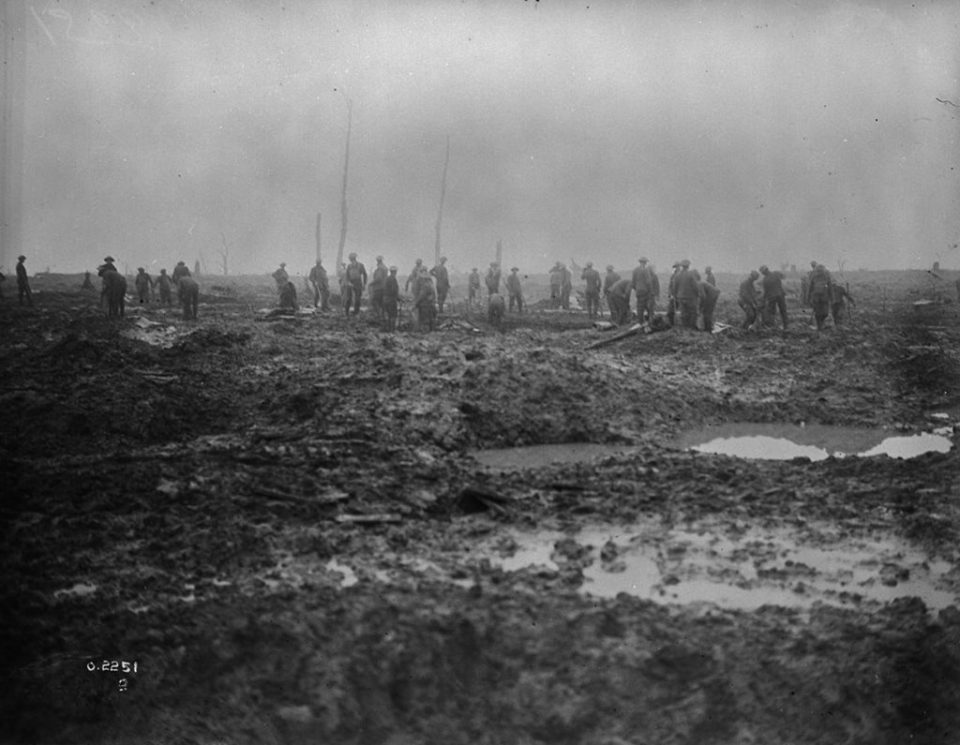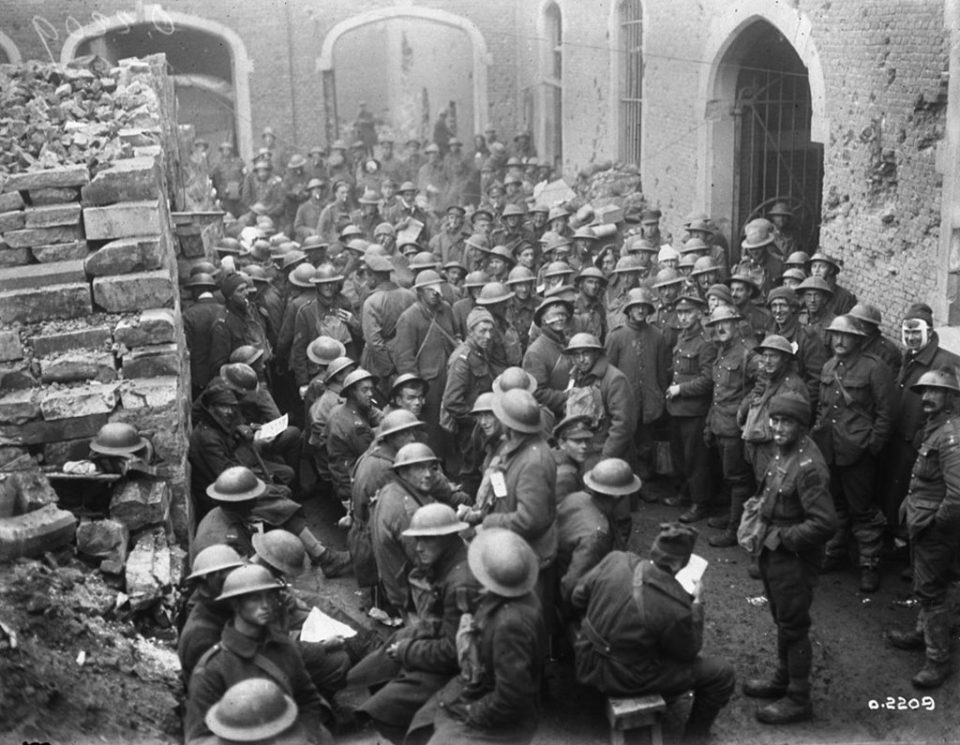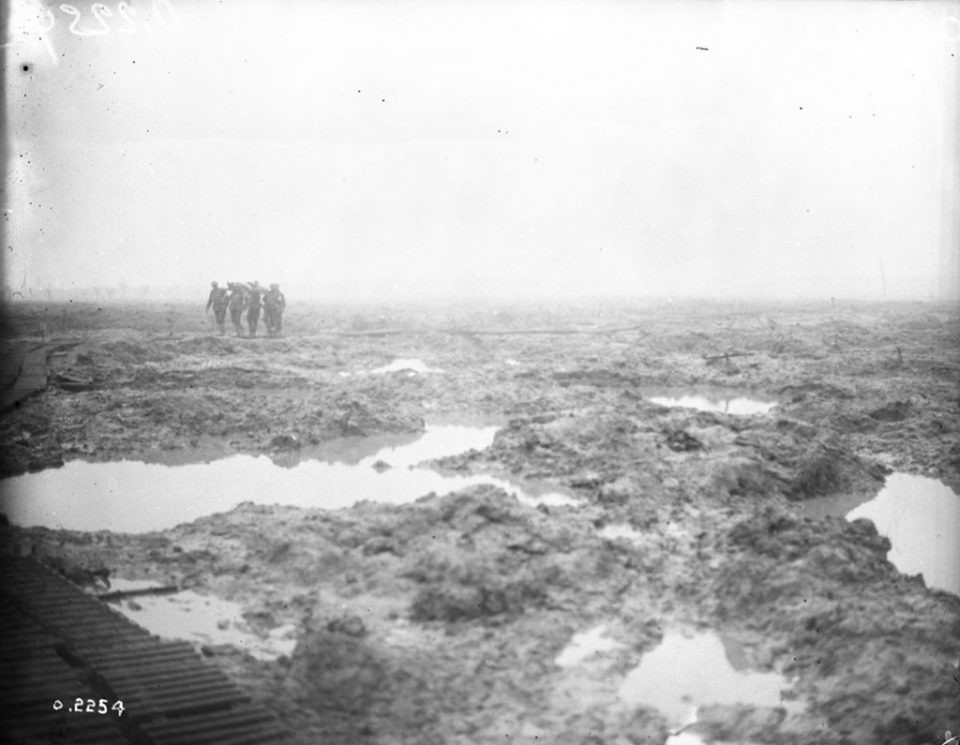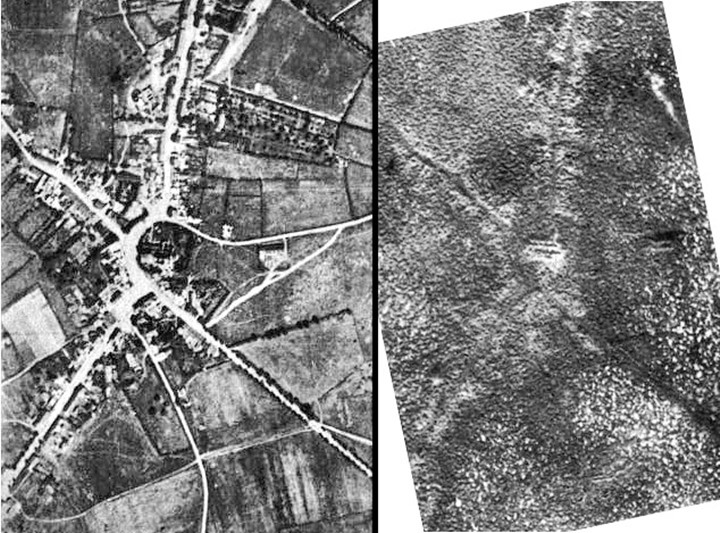Passchendaele
The Battle of Passchendaele was named after a village situated atop an extremely slight ridge east of the Belgian city of Ypres. This 1917 combat is also known as the third Battle of Ypres and was another of Canada’s memorable successes during the Great War. Unfortunately, Passchendaele also became widely known as the battle which best illustrated the foolishness exhibited at times by the Entente; many scholars afterward felt that too many lives were needlessly sacrificed here for no great gain.
Like the attack on Vimy months earlier, the attempt for Passchendaele in the Flanders sector was itself a component of the overarching Arras Offensive of 1917. On the 31st of July, the British attacked eastwards towards the village, but within weeks they were stymied by the hard-fighting and heavily fortified German defenders. Concurrently, French troops were mutinying en masse to the south (some in response to Nivelle‘s failure). Meanwhile, in the English Channel, German U-boats that had launched from occupied Belgian ports were destroying many British and allied ships; unrestricted submarine warfare was proving a success for the Germans.
British Field Marshal Douglas Haig felt that he had to act. A successful campaign into Passchendaele would allow the Entente forces to challenge the enemy’s offensive naval capabilities on the coast, but more importantly, a win would attract German reinforcements and buy time for the French army to steady itself. In addition, the Germans held a strategic railway hub situated 10 km to the northeast of Ypres; if the Brits could take that, it would have a negative impact on the German ability to supply their forces in the northern portions of the western front. Regrettably come September, the British attack had stalled and with increasing pressure on Haig to either produce a victory or terminate the offensive, he turned to the formidable Anzac soldiers (Australian and New Zealand Army Corps) to provide support for the faltering British thrust. Nevertheless, the top-notch Anzacs were shut down as well.
At this point, it would be remiss to not mention the unbelievably horrible field conditions that the soldiers had to cope with and struggle through. This is where Passchendaele finds a large part of its reputation . . .
Can you imagine what it would be like to try to pass through this area, let alone while attempting to manoeuver between exploding shells as rifles and machine guns were being fired at you?
Passchendaele is a perfect example of what many came to see as an exercise that was too common on the Western Front whereby the Field Marshalls ordered men into impossible situations without knowledge of the on-the-ground challenges. For example, British Field Marshall Haig’s right-hand-man Chief of Staff Launcelot Kiggel, upon seeing the field of carnage soon after the Canadians took the entirety of Passchendaele, wept and said:
As Haig began to realize that the tough colonials from the southern hemisphere (the Anzacs) would likely not be able to take Passchendaele, he called on Currie and the now highly touted four Canadian divisions. After inspecting the battlefield, Currie, to his credit, told the British Field Marshal that he wouldn’t do it because too many lives would be lost. Haig reiterated the strategic and psychological importance of the battle and managed to eventually convince Currie to follow the command. But the Canadian General had conditions. First off, he would require total control of the operation, including the planning and timing of the attack. And second, he would require more artillery guns. Haig had no issues with either request and Currie, still concerned, told Haig to expect 16 000 casualties.
In October, all four Canadian divisions moved into the line and began preparing for the attack. New roads and light railways were built to bring equipment and supplies to the front. New gun pits were dug or the old ones reconstructed. Fresh, new artillery guns were also added to the Canadian barrage forces. All the while, men had to stand on the surface to create these offensive and defensive features because the ground was too wet and muddy to allow any successful digging. As a result, the men were constantly exposed to enemy fire and casualties quickly accumulated. Finally, on October 26th, everything was in place and the attack was set off. Metre by metre, target by target, Canadian forces battled their way towards the village of Passchendaele. On November 6th, the village was taken, and by the 10th the Canadians held all of the high ground in its vicinity.
The Canadian ferocity was perhaps best described by German General Erich von Ludendorff:
When all was said and done, Currie’s prediction was on the mark; the four Canadian divisions lost a combined 15 654 casualties (4 000 of which were deaths), numbers that exceeded the losses at Vimy. Nine Victoria Crosses were awarded for acts of valour at Passchendaele. Depressingly, in 1918 during the German Spring Offensive, the Entente forces would be pushed from the land that the Canadians had won months earlier.
Unit Home
1917 Events. Promotions. Hill 70. Canadian Politics. Russia and France Teeter. Military Service Act. Wartime Elections Act.
Battling On Quiz
Summer 1917. Hill 70. Borden's Acts. Victory Bond Poster. Sniping. Passchendaele.

